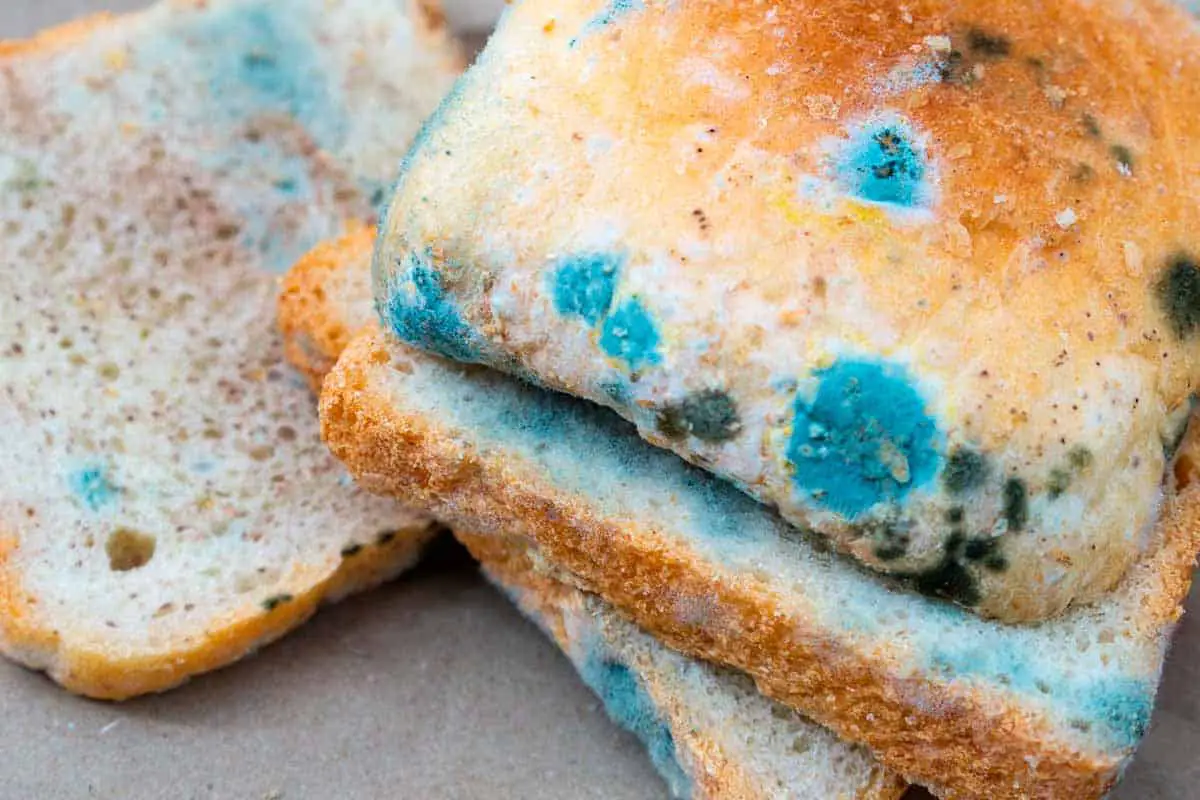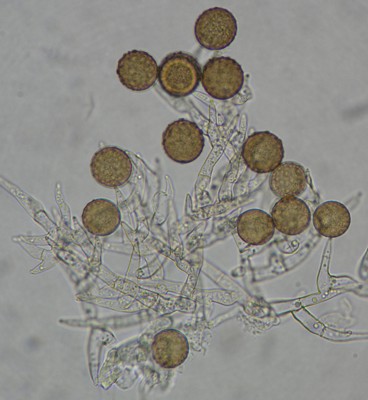Have you ever opened your bread bag to find a thick, white fuzz growing on your favorite loaf? If so, you’re not alone. This common sight—often met with a grimace and a quick trip to the trash—is actually a fascinating glimpse into the world of fungi. While we might see it as a sign of spoilage, the white fuzz on your bread is a complex and intriguing form of life.

Image:
This article delves into the captivating world of bread mold, specifically focusing on the white variety. We’ll explore its origins, identify the culprit behind the fuzz, understand its growth, and learn why it isn’t just an unsightly nuisance, but a vital part of the natural ecosystem. So, grab a magnifying glass and join us as we unravel the secrets of the white fuzz on your bread!
What Exactly is Mold?
Mold, in its simplest form, is a type of fungus. Just like mushrooms, yeasts, and other fungi, mold belongs to a kingdom of organisms vastly different from plants and animals. Unlike plants, which make their own food through photosynthesis, molds obtain their sustenance by breaking down organic material. This decomposition process is a crucial function within the ecosystem, contributing to nutrient cycling and recycling. While many molds play vital roles in nature, some can contaminate food and cause health issues.
The Culprit: Rhizopus stolonifer
The fluffy white mold commonly seen on bread is usually caused by a specific species of mold called Rhizopus stolonifer, also known as black bread mold. This mold is a common inhabitant of soil and decaying organic matter, readily finding its way into our kitchens and pantries. Its presence is a sign that the bread has begun to decompose, indicating its unsuitability for consumption. The white fuzz we see is actually a network of hyphae, which are the thread-like filaments that make up the mold’s body. These hyphae quickly spread across the bread surface, branching out to create a dense, web-like structure.
The Life Cycle of Rhizopus stolonifer
Mold propagation relies on the presence of spores, microscopic particles that act as the mold’s reproductive units. These spores are released into the air and can travel long distances, waiting for the right conditions to germinate. Rhizopus stolonifer, like other bread molds, flourishes in warm, moist environments. When spores land on bread, they readily germinate and begin to grow. In ideal conditions, the white fuzz can develop quickly, often within a few days, quickly turning the bread into an undesirable food source.

Image:
Why is White Mold a Sign of Spoilage?
While the white fuzz itself might not seem harmful, the issue with moldy bread lies in its potential production of mycotoxins. These are toxic substances that can cause a range of health problems when consumed. Rhizopus stolonifer is known to produce certain mycotoxins, although the levels vary depending on factors like the mold’s age, the type of bread, and storage conditions. Even if the mold is visible only on a small portion of the bread, mycotoxins can quickly spread throughout the loaf. This is why it’s paramount to discard any moldy bread completely, as even removing the visible fuzz doesn’t guarantee the absence of harmful mycotoxins.
Preventing Mold Growth: Tips for Fresh Bread
Preventing mold growth is easier than dealing with it. Here are some practical tips to keep your bread fresh and mold-free:
- Store properly: Keep bread in airtight containers or bags to prevent contact with air. Moisture is mold’s best friend, so it’s vital to store bread in a dry environment.
- Refrigerate: If you want to prolong your bread’s shelf life, consider refrigerating it. This will significantly slow down the growth of mold spores.
- Freezer friendly: For longer-term storage, freeze your bread. This can help keep it fresh for several months without any signs of mold.
- Avoid cross-contamination: Keep moldy bread separate from other groceries and clean surfaces where you prepare food to prevent the spread of spores.
Mold: More Than Just a Spoilage Agent
While mold’s presence on bread signals its unsuitability for consumption, it’s important to note that molds play vital roles in various industries and ecosystems. From cheese making to antibiotic production, mold’s unique characteristics contribute significantly to human well-being. For instance, the famous blue cheese gets its distinctive taste and appearance from the mold Penicillium roqueforti. Similarly, the discovery of penicillin, a groundbreaking antibiotic, stemmed from the observation of mold inhibiting bacterial growth.
A Closer Look: Understanding the Science of Mold
Mold growth is a complex process involving a series of intricate biological and chemical reactions. The white fuzz we see is only the visible part of the organism. Beneath the surface, mold’s hyphae extend deep into the bread, breaking it down to obtain nutrients. This decomposition process releases various byproducts, including enzymes, acids, and spores. Some of these byproducts can be responsible for the characteristic unpleasant odor and taste associated with moldy bread.
Mold as a Biodiversity Indicator
Mold’s presence on bread isn’t just a random occurrence. It’s a clear indicator of environmental conditions. The type of mold that develops, its growth rate, and its appearance can provide valuable insights into the surrounding environment’s temperature, humidity, and air quality. For instance, the type of mold that develops on bread can indicate the presence of particular allergens or toxins in the environment.
From Bread to Biomaterials: Mold’s Potential
Research is revealing mold’s potential beyond its role in food spoilage. Scientists are exploring the use of mold in various applications, including the production of biofuels, biodegradable plastics, and even building materials. The ability of mold to break down organic matter effectively makes it a good candidate for sustainable solutions in a variety of industries.
White On Bread Mold
Conclusion
The white fuzz on your bread, while a signal of spoilage, is a fascinating window into the world of fungi. While it’s crucial to prevent mold growth in our food, it’s equally important to appreciate its role in nature and its potential for innovation. From decomposition to antibiotic production, mold’s unique capabilities have shaped our world in surprising ways. So next time you encounter that white fuzz, take a moment to marvel at its complexity and wonder at the unseen world of microorganisms that surround us.
To delve deeper into the world of bread mold, explore reliable sources such as scientific journals, peer-reviewed publications, and websites specializing in fungi and microbiology. You may also find helpful resources from organizations dedicated to food safety and consumer education. Remember, knowledge is your best weapon against unwanted mold growth in your kitchen!





